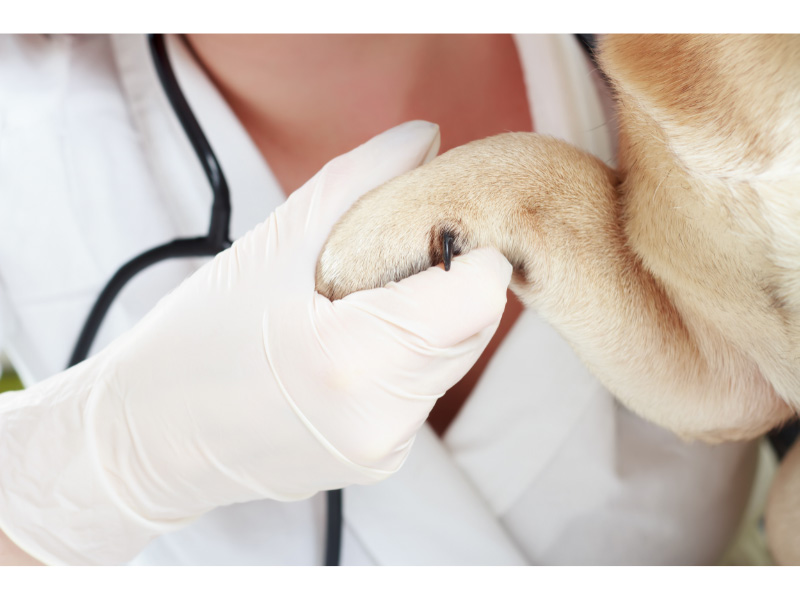
SAVE AN EXTRA $5 - $20 OFFUse code PETS in cart (Exclusions apply)

Save 40% with first AutoShipUse code NEW40 (Up to $40 max. Exclusions apply)

While efforts are made to answer all questions as quickly as possible, if an immediate answer is required or if your pet is in need of urgent or emergency care, contact your pet's veterinarian immediately.

You will receive an answer from Dr. Lindsay and our vet/tech team as soon as possible, usually the same day.
All answers are provided for informational or educational purposes only, and are intended to be a supplement to, and not a substitute for, the expertise and professional judgment of your pet's veterinarian.
It may be necessary to consult your pet's veterinarian regarding the applicability of any opinions or recommendations with respect to your pet's symptoms or medical condition.
Close
An error has occurred, please reload the page and try again.
Close
While efforts are made to answer all questions as quickly as possible, if an immediate answer is required or if your pet is in need of urgent or emergency care, contact your pet's veterinarian immediately.
There is no answer related to your question

Does your pet sometimes run with a little skip in their step, or hold up one hind paw for a few strides, then continue running as though nothing has happened? Luxating patella, also known as kneecap dislocation or a “trick knee,” is the most common orthopedic issue in small and toy breed dogs, diagnosed in about 7% of puppies. It’s also occasionally seen in cats and large dogs, too.
The “patella” is your pet’s kneecap, and it normally rests in a groove at the end of their femur, or thighbone. It’s not attached to the bone, rather, it’s held in place by a ligament that runs up the femur. The kneecap allows the joint to move smoothly, somewhat like a pulley system, when your pet extends their leg.
In pets with a luxating patella, the knee ligament is offset slightly. When the pet extends their leg, the kneecap shifts. Both knees are affected in about 50% of cases.
Medial luxating patella, most commonly seen in small dogs and cats, causes the kneecap to move inwards, towards the center of the body.
Lateral luxating patella causes the kneecap to move outwards, away from the body, and this condition is usually seen in large breed dogs.
Over time, this abnormal movement can cause the groove in which the kneecap sits can wear down and become more shallow. As a result, the kneecap is more likely to move out of place and less likely to return to its normal position.
Luxating patella is primarily a congenital condition that your pet can inherit from their parents. It’s present at birth and often diagnosed by the time your pet is six months old, though it may go undetected until it begins to cause symptoms, which may not happen until your pet is a young adult.
Toy breed dogs, including the Chihuahua, Yorkie, Pomeranian, Maltese, and Bichon Frise are most likely to eventually develop some level of patellar luxation. Certain large breeds, including the Shar-Pei, Great Pyrenees, Flat-Coated Retriever, and Akita are also genetically predisposed to luxating patella.
In cats, Devon Rex and Abyssinian breeds are most likely to be affected. Reputable dog and cat breeders have their breeding stock tested for luxating patella to avoid having puppies or kittens predisposed to developing the condition.
Less often, luxating patella is not present at birth, instead associated with trauma or injury that may weaken the bone or soft tissue that supports the knee.
It’s possible for a dog or cat with luxating patella to experience few to zero symptoms for years. Aging, obesity, or injury can exacerbate the condition and lead to noticeable progression. Patellar luxation is classified according to four grades of severity.
Grade 1
Grade 2
Grade 3
Grade 4
Your veterinarian can diagnose luxating patella during a physical examination. They may also use x-rays or a CT scan to get a better look at the structure of the bone and surrounding tissue.
In dogs and cats with Grade 1 or 2, treatment may not be necessary, though your veterinarian may recommend avoiding exercises and movements that can trigger luxation, like running, sudden turns, and jumping.
Grade 3 or 4 luxating patella is corrected through surgery to move the knee ligament and/or deepen the groove in the femur. Without treatment, pets with a luxating patella are more susceptible to developing arthritis or a cranial cruciate tear. Surgery is successful in the great majority of cases and most pets regain full use of their knee after recovery
VISION
Every pet deserves to live a long, happy, healthy life.
 Swipe
Swipe